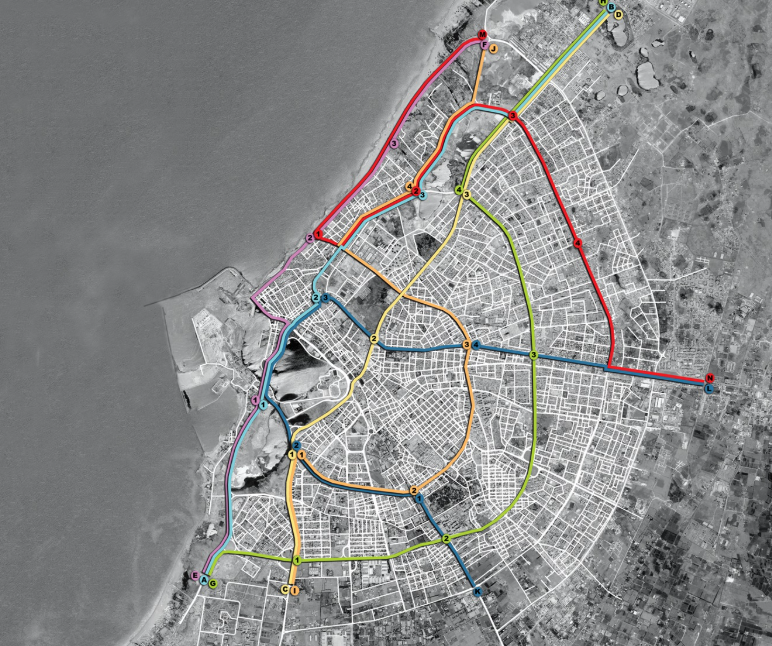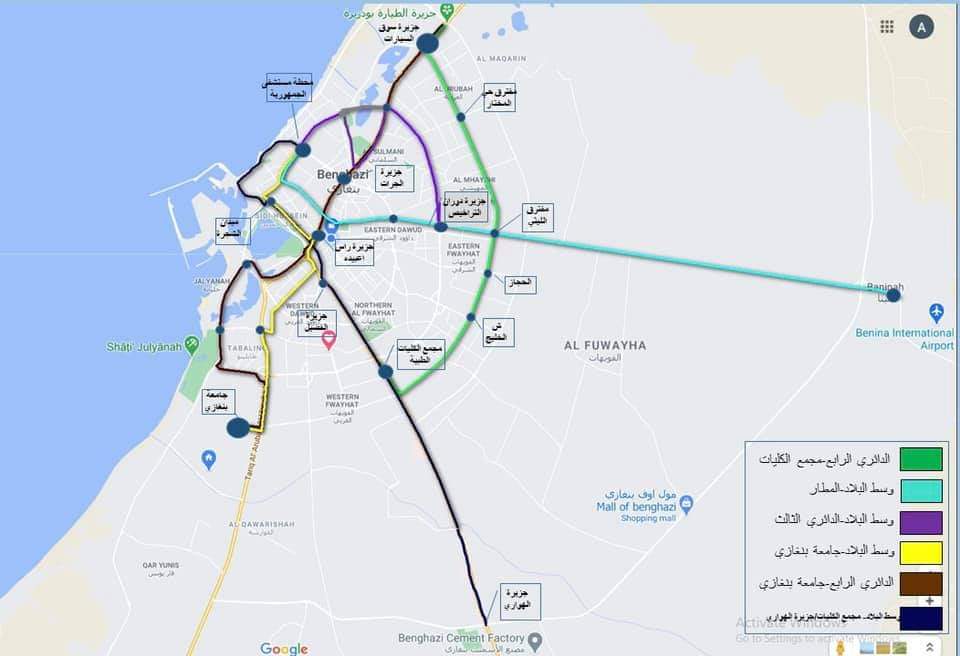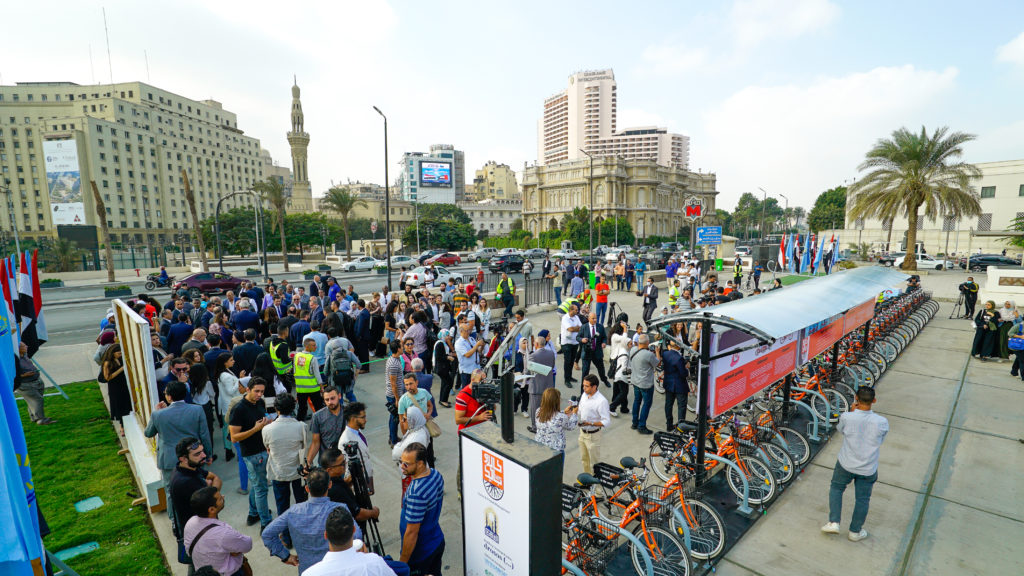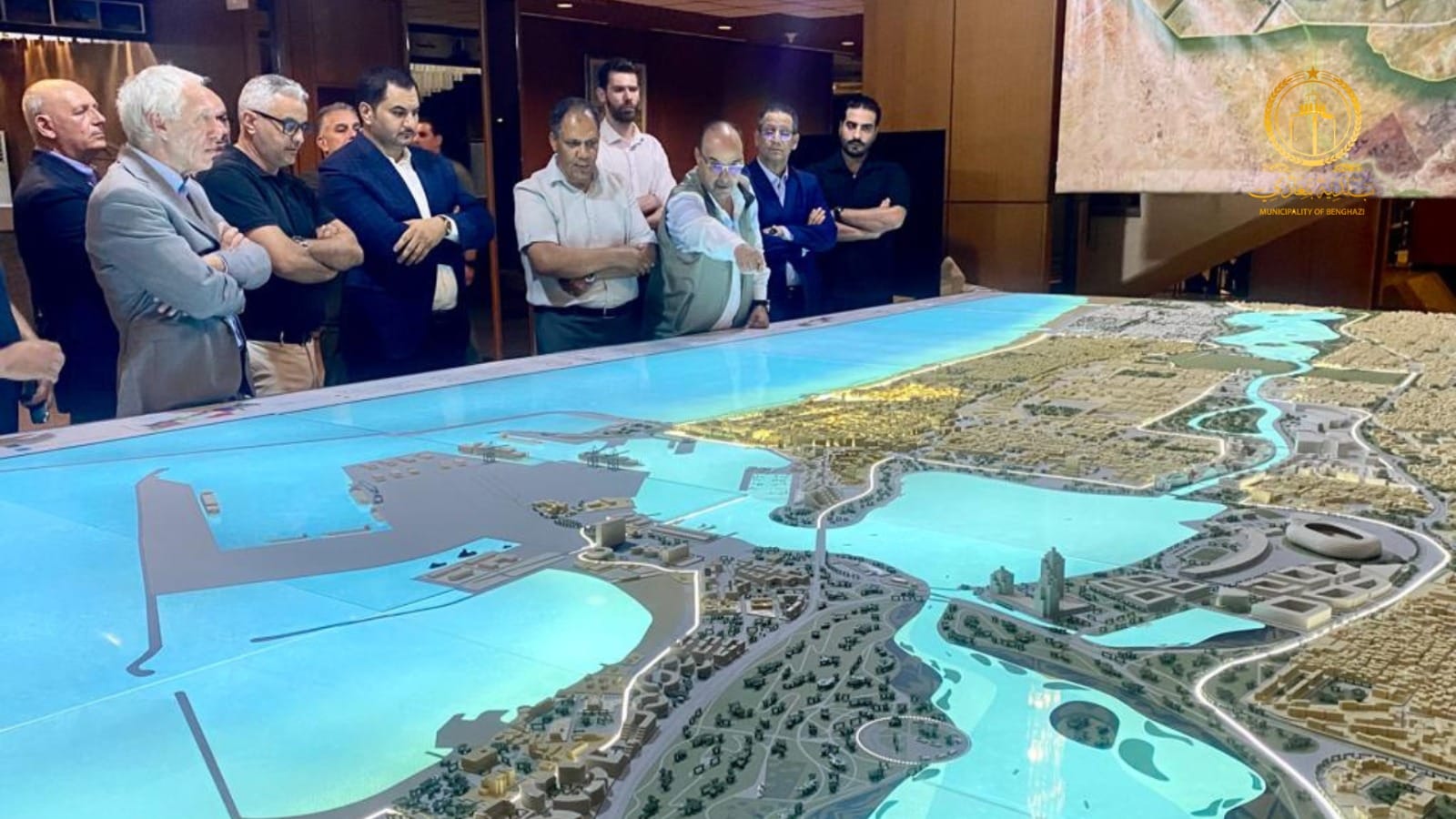
Close

Approach Words: Integrated City, Sustainability, Urban Resilience
Public Policy Instruments: Organization, Physical Intervention, Planning
The Benghazi Metro is a landmark development project designed to modernize Benghazi, Libya’s transportation infrastructure, and support post-conflict recovery. Launched in May 2023, it is part of Libya’s broader strategy to revitalize the economy through urban planning initiatives and large-scale infrastructure investments, including renewable energy and railways.1 2
Developed through a partnership agreement between the Libyan government and a multinational consortium including the Chinese group BFI, China Railway Group, the consulting firm Arup, and Siemens Technology Group, the metro system envisions to establish Benghazi as a “sustainable, connected, and economically resilient hub” for eastern Libya.3 4
Aligned with Libya’s efforts to rebuild cities affected by conflict and natural disasters like Storm Daniel (2023), the metro’s objective is to drive economic diversification, reduce carbon emissions, and improve urban mobility. It is also a key element of the Eastern Libyan government’s six major infrastructure projects for 2024, which include a new airport, solar plants, and railway network.5 6 7

Title: Benghazi Mobility Master Plan.
Source: Click Here

Title: Benghazi's metro paths proposal.
Source: Click Here

Title: The Railways Board workshop on LRT for Tripoli and Benghazi metro.
Source: Click Here

Title: Master Plan Model of Benghazi City Featuring the Metro Project.
Source: Click Here
Spanning approximately 64,000 hectares, the Benghazi Metro integrates advanced transportation solutions for the entire metropolitan area.8
Key components include:

Owner/Developer (Public)

Consultant/Designer

The Benghazi Metro is a collaborative effort led by the Libyan government, Chinese consortium BFI, China Railway International Group, British consulting firm Arup, and German technology giant Siemens.14 15 The project is funded by the Chinese group and expected to be completed within seven to nine years.16
The metro’s implementation is structured into three phases:
As of February 2025, Phase 1 is nearing completion, with route adjustments approved to align with the broader Benghazi Mobility Master Plan.21 22 Upon completion in 2032, the metro is expected to enhance regional connectivity, create jobs, and position Benghazi as a model for sustainable urban development in North Africa.23
Project Link
Endnotes
N.A.
References